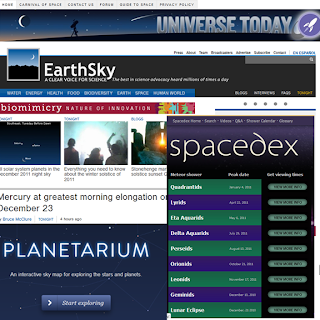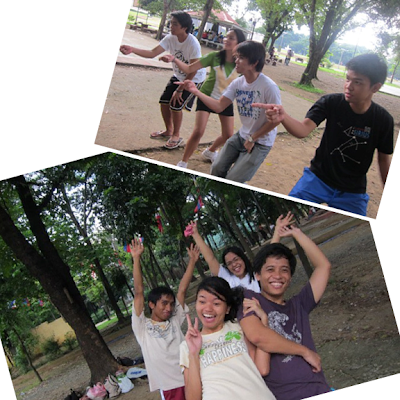by Engr. Eduardo “Dward” Bornilla Jr.,
MS Marine Science
The moon, as a natural satellite, appears to revolve around the Earth in an elliptical orbit. But astronomically, these two bodies revolve around their common center of mass called a barycenter, which is also the point that tracks the elliptical orbit around the sun, not the center of the earth. Because of the synchronous rotation and revolution of the moon, only the near side of the moon is seen facing the earth. This moon’s motion is observed through its phase change in a cycle that occurs in a synodic month.
A lunar cycle, equivalent to the astronomical synodic month, takes place every 29.5 days in which the moon is able to complete its waxing and waning phases (e.g. full moon to full moon). This cycle affects the marine environment directly and indirectly by means of differences in moonlight intensity and tides, respectively, at different periodicities: 24.84 hours (lunar-daily), 14.8 days (semilunar), and 29.5 days (lunar-monthly) (McDowall 1969).
The direct effect of changes in moon phases is the amount of lunar intensity received by the earth (Naylor 2001). On clear nights, the earth receives light intensities (in microwatts/sq cm) of 1.83x10-1 at full moon, 2.12x10-3 at the quarters, and 1.8x10-4 at new moon. For heavy cloud cover, the intensity is reduced to up to 10 times (McDowall 1969). The indirect effect of lunar cycle on the marine environment is tide (Naylor 2001), in response to the gravitational pull of the moon to the earth. The gravitational attraction is strongest on the side of the earth facing the moon causing a bulge of water. On the opposite side, another bulge is created due to the centrifugal force brought about by the spinning of the earth-moon system in its barycenter (Reese 2005). Every new moon and full moon, the earth experiences spring tides (maximum tidal range) while every quarters, the earth experiences neap tides (minimum tidal range). The difference between these tides is due to the position of the moon relative to the sun and earth.
Due to the tilt of the earth’s axis, the temperate regions experience 4 seasons: spring, summer, autumn and winter. Because of the changes in the declination of the sun and moon, there is a significant difference between the spring tides during equinox and solstice (Naylor 2010) that the equinoctial spring tides have maximum sea level rise near the equator while the solstice spring tides have maximum sea level rise near the Tropics of Cancer and Capricorn.
Response of marine animals to lunar cycle
There had been studies on the effects of lunar cycle on the behavioural patterns of marine animals. In 1969, McDowall compiled studies on marine animals that seem to show occurrence of lunar rhythms and their respective mechanisms to adapt with their environmental changes. Some scientists argue that certain animal behaviour is a response to lunar stimuli (e.g. moonlight) while others reason that the rhythmic activity has adapted to the long-term cycles and continue to persist because of “biological clock” (McDowall 1969). Some observations, maybe due to lack of study during or maybe due to complexity, have no causal mechanism to explain rhythmic behaviours.
For the purpose of this article, several observed responses of marine organisms to the lunar cycle are illustrated as there are available data to prove or disprove such observations. These include reproductive cycle (McDowall 1969; Omori 1995), mobility (Yamatoto et al. 2008), retention (Law et al. 2010; Naylor 2010), and moulting (Naylor 2001).
Pacific palolo. Perhaps the most documented animal that exhibit reproductive cycle in relation to the moon is the Pacific palolo (Palola viridis), a worm living in tropical reefs in the Pacific. For a 78-year data of discontinuous observations from 1843-1999, it appears that the spawning of this worm occurs around the third quarter of the moon every October and sometimes September, whenever there is a blue moon.
Green shore crab. Another response of a marine animal to lunar cycle is exhibited by green shore crab (Carcinus maenas), a littoral crab living in gravel near high water mark and is native to Northeast Atlantic Ocean and Baltic Sea. It is observed that this species moults more frequently during spring tides than that at neap tides with forthnightly periodicity (Naylor 2001). Naylor justified that peak moulting after times of new or full moon is advantageous for the crabs are covered by seawater at high spring tides. Moulting during neap tides, when the crab habitat can be exposed at high tides, is maladaptive for early juveniles since lack of covering exposes them to damaging effects of wave action (Naylor 2001).
Streaked shearwater. Moonlight intensity affects the visibility of marine animals at night that some prefer to settle to avoid predation while others prefer to be mobile to catch prey. In the case of streaked shearwater, a pelagic seabird in eastern and Southeast Asia, this bird flew for longer periods and landed on water more frequently on nights with a full moon than on nights with a new moon (Yamatoto et al. 2008). The reason for adaptation to lunar rhythm is the higher predation risk from visual predators like sharks at higher moonlight intensity when seating on the water surface. Also, the seabirds forage on prey more frequently on nights with higher levels of moonlight intensity.
Leatherback turtle. The Leatherback turtle is the largest sea turtle with carapace covered by skin and oily flesh and can be found in tropical and subtropical oceans (Law et al. 2010). In Tobago, it is observed that these turtles nest when tides are at their highest (above the high tide line). The lunar phase may also affect nesting visually. Based on the data collected by locals and other volunteers, Law et al. correlated the nesting events per night of leatherback turtles to the lunar phase. Other authors in Law et al. study state that turtles emerge when tides are at their highest to minimize the distance and duration of crawls since their terrestrial movement is slow and metabolically costly. Also, on clear full moon night, there is greater visibility and presence of egg predators may discourage turtle emergence.
Selective advantage of lunar rhythms in reproduction
For many marine fishes and other marine invertebrates, it is observed that they have adaptive lunar or semi-lunar reproductive cycle. Omori considered adaptiveness as equivalent to reproductive rate which he defined as the number of juveniles reproduced during some constant period per an adult individual of the population with a cyclic or non-cyclic reproductive activity (Omori 1994).
Omori summarized the advantages of the rhythms as increase in the rate of fertilization, increase in the rate of mating, increase in the reproductive success, retention of larvae in nursery sites, spread of larvae over some adult habitats, and decrease in predator pressure (Omori 1994). Examples of these advantages can be observed in Galactias maculatus, in which at full moon and new moon spring tides, the mature fish migrate to spawning grounds and move up on to the grassy flats of river estuaries to areas covered by water at spring tides. The eggs are deposited among grasses, eventually washed down among the bases of grass clumps, develop later on and then hatch on the next spring tide that covers the grass (McDowall 1969). These eggs stay at their nursery sites and are more protected against their predators. In the case of species that release their gametes, the advantage to their lunar rhythm is that when spawning takes place at very low tides, the gametes are more concentrated on a smaller volume of water, making the chances for fertilization higher (McDowall 1969).
The sun and moon cause rhythmic changes in our environment (i.e. light, temperature, and other related variations) in a predictable manner. These environmental cycles affect plants and animals that their behaviour adapted to changes by avoiding harmful parts and utilizing beneficial parts (McDowall 1969).
References:
Bentley, M.G., P.J. W. Olive and K. Last. (2001). “Sexual satellites, moonlight and the nuptial dances of worms: the influence of the moon on the reproduction of marine animals”. Earth, Moon and Planets. 85-86: 67-84.
Law, A. et al. (2010). The Influence of Lunar, Tidal and Nocturnal Phases on the Nesting Activity of Leatherbacks (Dermochelys coriacea) in Tobago, West Indies. Marine Turtle Newsletter. Vol. 127: 12-17.
McDowall, R.M.(1969). Lunar Rhytms in Aquatic Animals: A General Review. Tuatara. Vol. 7 ( Issue 3): 133-143.
Naylor, Ernest. (2001). Marine Animal Behavior in Relation to Lunar Phase. Marine Earth, Moon and Planets. 85-86: 291-302.
Naylor, Ernest.(2010). Moonlight. Chronobiology of Marine Organisms. 252 pages. Cambridge University Press. New York.
Omori, Koji. (1995). The adaptive significance of a lunar or semi-lunar reproductive cycle in marine animals. Ecological Modeling. Vol. 82: 41-49.
Pinet, Paul R. (1992). Tides. Oceanography. West Publishing Company. St. Paul, MN. 226-252.
Reese, Martin J. (2005). “The Moon”. Universe: the definitive visual guide. 150. Dorling Kindersley. London.
Yamatoto, Takashi et al. (2008). The lunar cycle affects at-sea behaviour in a pelagic seabird, the streaked shearwater, Calonectris leucomelas. Animal Behavior. Vol. 76: 1647-1652.










